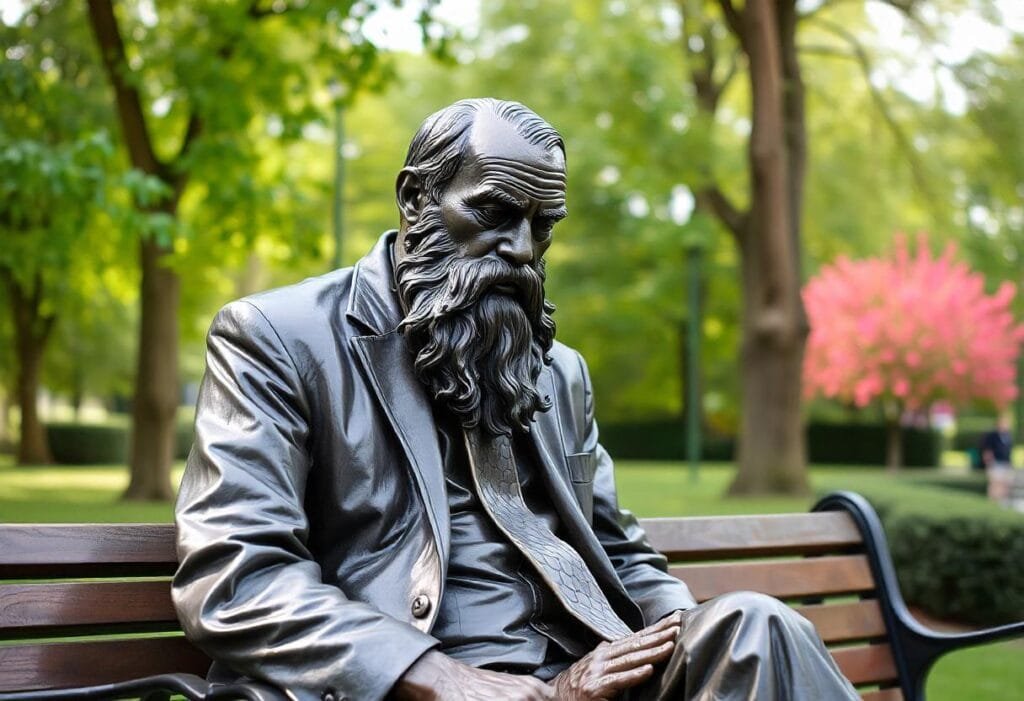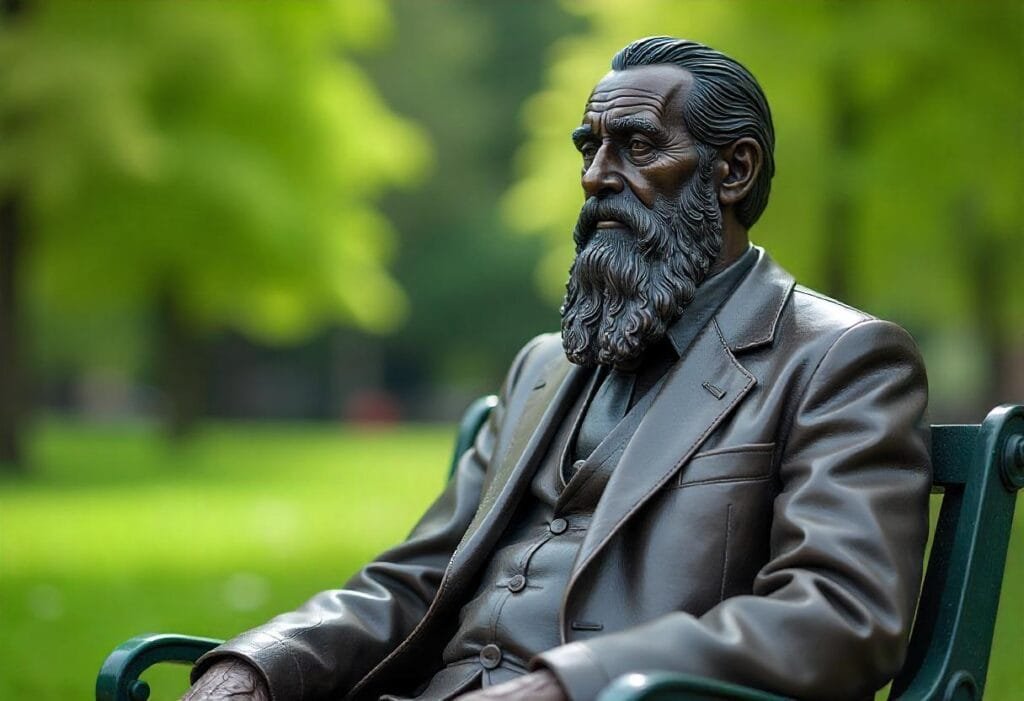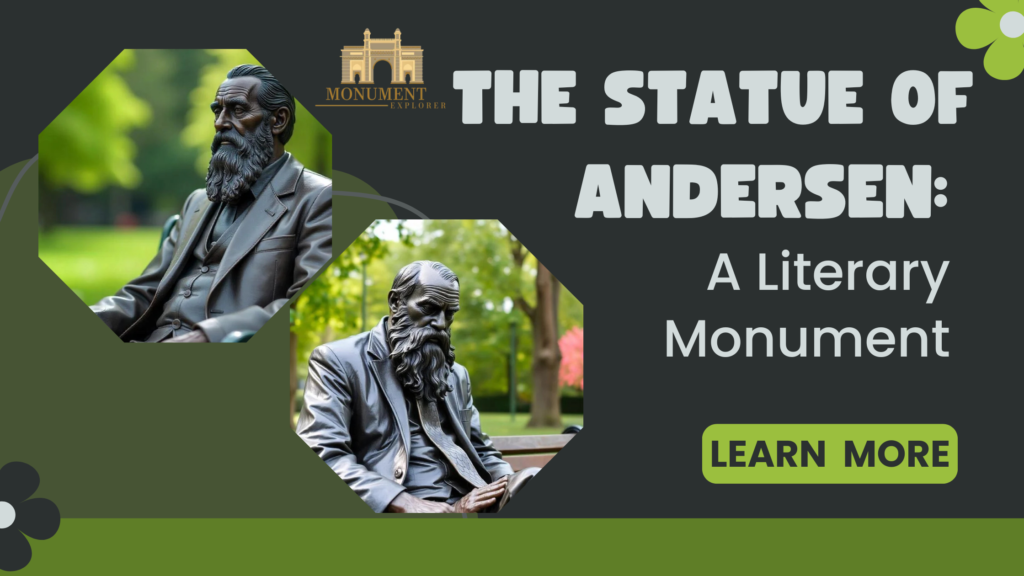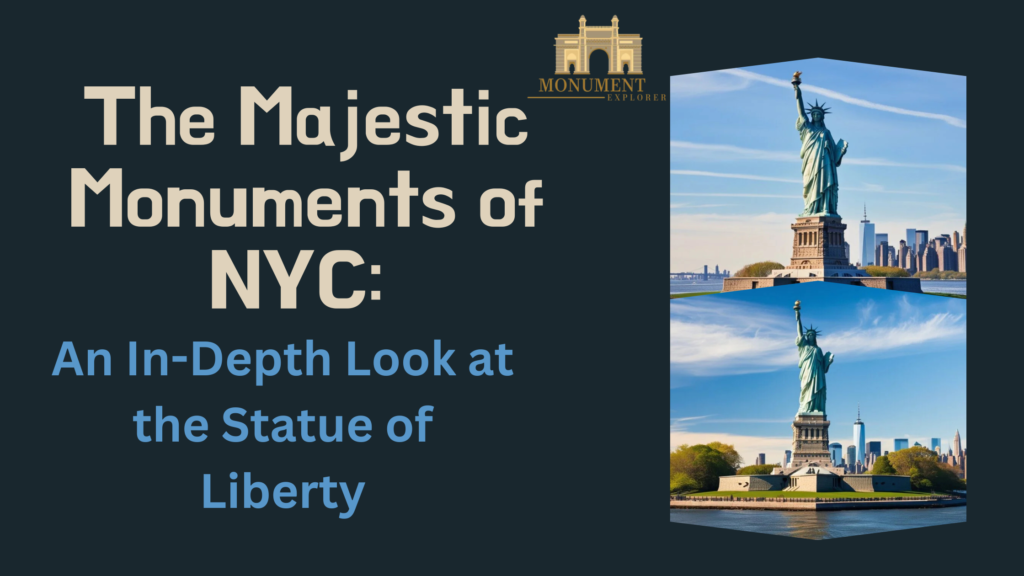Table of Contents
Introduction

Monuments are symbols of cultural and historical marks that celebrate people, events, or ideas that shaped societies to be etched in history. Among these monuments are those dedicated to the legendary Hans Christian Andersen, who was one of the most world-renowned legends of Denmark, known for his elegant fairy tales. The remarkable words by Andersen bring magic into the lives of people through the incredible work that has captivated generation after generation in succession.
Statues have been erected in several sites across the world to pay tribute to the literary genius of such literary elements as Andersen. This blog post discusses the history, symbolism, and impacts of the Statue of Andersen. This statue, in itself, was more than enough to tell that legacy of the night of storytelling, which had lived in our culture long after its passing.
The Origin of the Statue of Andersen
Though Hans Christian Andersen’s literary skills are well-respected all around the globe, it was there in his birthplace Denmark where his journey to becoming a legendary figure began. Born in the year 1805 in the city of Odense, he was brought up in a poor background. However, his imagination was huge enough for his writing to flourish. Over time, his collection of fairy tales such as “The Little Mermaid,” “The Ugly Duckling,” and “The Emperor’s New Clothes” gained momentum globally and made him one of the most influential authors in the world.
Five years after his death, in 1880, he was commemorated with the first sculpture, this one which is situated in the gardens of Rosenborg Castle in Copenhagen, of the Danish writer as a sitting figure absorbed in a book and gazing outside dazed by some fantasy novel. The work was sculpted by August Saabye. This later inspired many other sculptures around the world which indicate specifically one characteristic of his life and work.
The Most Famous Statues of Andersen Around the World
Although the most iconic of all is still standing tall in Copenhagen, there are many other statues of Andersen in other parts of the world. Here’s a glimpse of some of the most populous Andersen monuments :
- Central Park, New York City: In 1956, there was a bronze statue of Andersen reading “The Ugly Duckling” to a duckling sitting at his feet. Of course, it is an important draw for children, who love climbing on the statue, but otherwise, it is perhaps the perfect representation of Andersen’s continued influence on young readers.
- Odense, Denmark – City of Birth of Andersen To the many statues devoted to Andersen in Odense that stands in the center of the city. There stands the famous writer posed, holding his characteristic hat and cane as he prepares to take off on yet another journey of literary intent.
- Solvang, California – Dubbed “The Danish Capital of America,” the city in California has even installed a bronze bust in the middle of its town square for Andersen. It is one of the cultural tributes to the writer and the rich tradition that Scandinavian countries nurture in storytelling.
- Bratislava, Slovakia – This city has a quirky, modern twist on Andersen, with the silhouette of the writer posing with a frog perched atop his head and a bird on top of his shoulder. Weird is indeed the design, but materializes the whimsy in the fairy tales of Andersen.
- Shanghai, China – Andersen’s influence, just as in many countries of the world, reaches in Asia. In 2006 a life-sized statue of Andersen was launched in Shanghai Changfeng Park. That statue has come to serve in commemoration of the way fairy tales by Andersen have left their stamp on Chinese culture, read with interest by children all over China.
Symbolism in the Statue of Andersen
There are layers of symbolism reflected from the writer’s life and work to his eternal legacy in the statue of Andersen. Some symbolic elements appear in most statues of Andersen:
- The Book: Most of the statues show Andersen holding or reading from a book, indicating a deep love for literature and storytelling. It symbolizes the scores of tales that he wrote down, which continue to inspire readers to this day.
- The Duckling: In some statues, one can see, for instance, in Central Park, a duckling that pays homage to Andersen’s world-famous tale “The Ugly Duckling.” Such a story fits into the right spirit of Andersen’s broader message, so to speak because it appeals to the sense of every individual across time and boundaries.
- The Hat and the Cane: Pictures frequently taken of Andersen are his cane and hat, these are the symbols of his travels and of the journey he took both literally in the world of his storytelling and figuratively. They reflect upon his feature of being able to wander through various forms of imagination and create worlds that would enchant readers all over the world.
- Characterized by Seated Pose: In most statues of Andersen, his sitting posture gives off contemplation, the telling of tales, or his association with the imaginative world. He therefore could thereby depict his posthumous role as a man of tales who sat down to narrate his tales to interested listeners.
Andersen’s Literary Impact and Legacy
Instead, the statue is a testament to a life lived as much as it symbolizes the life associated with the broader impacts of literature and culture. With over 125 translations, he is perhaps among the world’s most translated authors. Among such works, most of his works, especially “The Little Mermaid, ” “The Snow Queen, “ and “Thumbelina” are significant and long-lasting works that have been made into films and plays as well as musicals and entice audiences all over the world today.
His works have taught precious lessons about love, perseverance, and the need to follow one’s own self’s principles. Filling his stories with emotion, humor, and wisdom, Andersen was the master storyteller who still shapes how and what most people of this era of modern storytelling like to tell.
Check Out: The Charging Bull of NYC: A Symbol of Power and Resilience.
Why Monuments Like the Statue of Andersen Matter

Monuments, such as the Statue of Andersen, bring about something more than a tourist scenario: they bring about physical reminders that form cultural and literary heritage shaping human experiences. Here’s why these monuments are important:
- Preserving History: Statues help conserve the legacies of influential people, especially to have future generations realize what they contributed. For example, Andersen’s statue is a monument that immortalizes the influencer’s effects on literature and the arts.
- Inspiring Imagination: The stories of Andersen are full of wonder, imagination, and creativity. Here, his statues around a town remind children and adults alike how true storytelling could add much to life.
- Cultural Bridges: The world that exists with Andersen’s sculptures is the way stories transverse linguistic and cultural barriers. What he has done is something peculiar, his tale makes him understand the teaching everyone that storytelling is a common human experience.
- Educational Value: The statues of authors exhibit a degree of learning that tends to provoke curiosity to understand and read more about the works and life of the person represented. Visitation to the Statue of Andersen might influence children to begin reading his fairy tales and then start loving reading.
Conclusion: Statue of Andersen
The Statue of Hans Christian Andersen is one of the greatest narrators from the face of the earth. There, in these monuments, is captured all that he lived for, all that he wrote and invented with eternal magic, never seen but at the heart of every fairy tale. Essentially, these monuments are a tribute to the literary genius of Andersen. Sitting and viewing it draws upon our minds the role storytelling has played in culture, imagination, and the storing of history.
The deeds of Andersen have been kept in the memory of the people from Copenhagen to New York, from Solvang to Shanghai. His tales turned into statues stay as sources of inspiration; it ensures the magic of storytelling will live for centuries. The Statue of Andersen is a witness to the eternal might of imagination, creativity, and pen and paper, no matter how it is represented and understood.
For complete info: Click Here.
FAQs about the Statue of Andersen
Where is the most famous Hans Christian Andersen statue located?
The most known Hans Christian Andersen statue can be found in the Rosenborg Castle Gardens, located in Copenhagen, Denmark. August Saabye sculpted the statue in 1880 and is one of the main monuments for the celebration of Andersen’s literary contributions.
What are some common themes represented in Andersen’s statues?
Some common motifs found among the Andersen statues are telling a story, imagination, transformation, and the effect that is left behind even after an author’s lifetime. Symbols such as books, the duckling, and Andersen’s hat and cane often speak about his life together with the works.
Why is Hans Christian Andersen considered a significant literary figure?
As one of the most significant literary figures in history, he remains a literary icon having managed to survive the test of time with his timeless fairy tales translated into more than 125 languages. The “Little Mermaid,” “The Ugly Duckling,” “The Snow Queen,” and many such stories remain the inspiration and fascination among readers throughout the world, with themes embodying love, transformation, and even self-acceptance.



